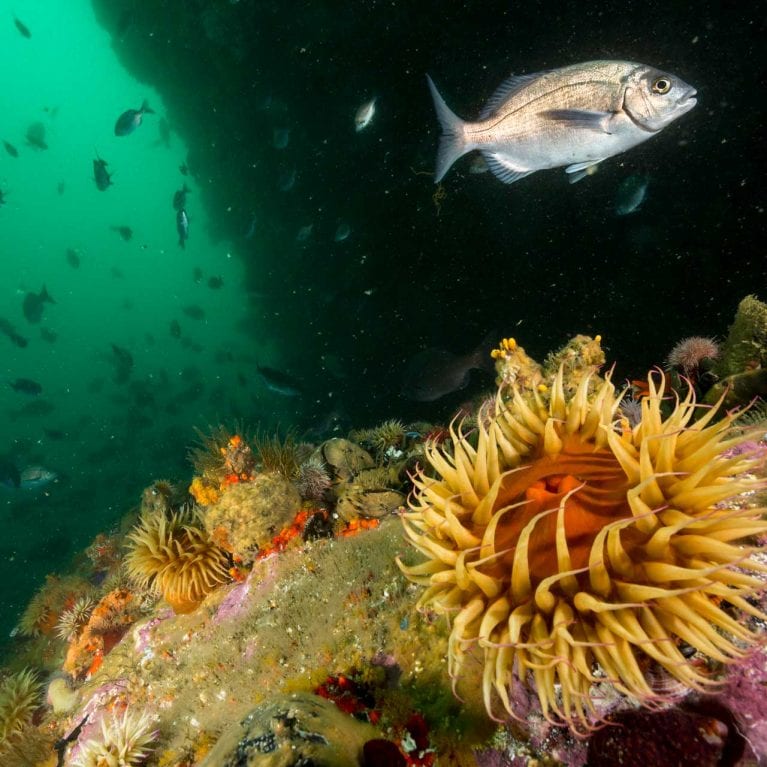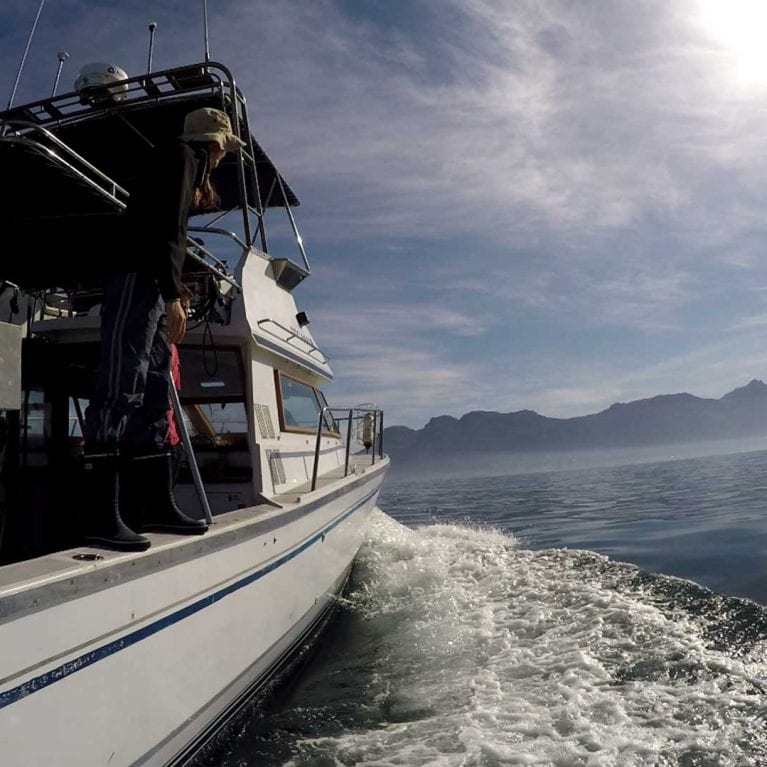False Bay on film
Lauren has already spent a year spying on False Bay’s fish life, but she has many more questions. Armed with more time and more underwater cameras she is heading back to sea to discover how best to use and protect the bay.
For a girl born inland and raised on red African soil, it’s a bit of a journey down to the sea. However, every day sees me fall a little more in love with our planet’s wildest spaces – so it was almost inevitable that I would end up at that last great blue wilderness: the ocean. My research career to this point has been nothing if not eclectic – a good indication of my love of learning and my addiction to the outdoors!
When I moved to the coast for university, my first bumbling attempts...


Optimising the effectiveness of marine biodiversity monitoring and conservation planning in False Bay, South Africa
Optimise biodiversity monitoring using stereo-baited remote underwater video (BRUV) technology and integrate data into conservation planning.
If informed management decisions are to regulate fisheries in South Africa’s False Bay, sound information across a wider species assemblage is needed. To date no such work has been conducted that samples marine species diversity and abundance in parallel with measures of anthropogenic pressure.
Recent research has identified BRUVs and stereo-BRUVs as the most suitable methods for the long-term monitoring of reef fish, particularly for the temperate rocky reefs of South Africa. Non-extractive, with more modest field labour requirements, and capable of deployment at greater depths and in marginal conditions, BRUVs confer several advantages over traditional monitoring methods. Along with recent advances in the accessibility, quality and affordability of camera equipment, stereo-BRUVs now facilitate size estimates for recorded species, making them a sound scientific tool with a low environmental impact. The deployment of BRUVs is therefore considered the optimal method, affording researchers a non-extractive means of determining changes in fish populations over time. The data obtained using BRUVs has yet to be integrated into systematic conservation planning for the South African marine environment.
Centuries of commercial fishing in False Bay have significantly affected inshore fish populations. The bay’s position at the confluence of two major oceanographic regimes makes the region both interesting and important for marine biodiversity. However, it is its importance to human-users that makes False Bay a pertinent study site. A growing urban population surrounds False Bay, and there are consequently increasing threats to biodiversity, predominantly in the form of pollution, coastal development and fishing. False Bay hosts a variety of ocean users, from fishermen to SCUBA divers and surfers, and contributes an important part of Cape Town’s annual tourism income. Where biodiversity meets anthropogenic pressures, an effective biodiversity monitoring strategy and informed conservation planning are essential to understand the system, manage resources and mitigate conflict.
This project therefore represents the timely first-time integration of low impact BRUVs data into a conservation planning strategy. In a system where a lack of transparency also often undermines research outcomes and conservation plans, video monitoring represents a new step towards effective education by marine scientists.
The aims and objectives of this project are to:
- Use BRUVs and jump cameras to survey the relative abundance and diversity of mobile and sessile invertebrates in False Bay.
- Use BRUVs to survey the relative abundance, diversity and size measures of ichthyofauna in False Bay.
- Establish biotopes based on invertebrate and ichthyofauna data and determine their relevance as a proxy for biodiversity monitoring.
- Establish the extent to which fishing activity and anthropogenic pressure on biodiversity correlate with biotopes of conservation importance.
- Use BRUVs data in a regional conservation plan to establish different management and conservation scenarios for False Bay.

